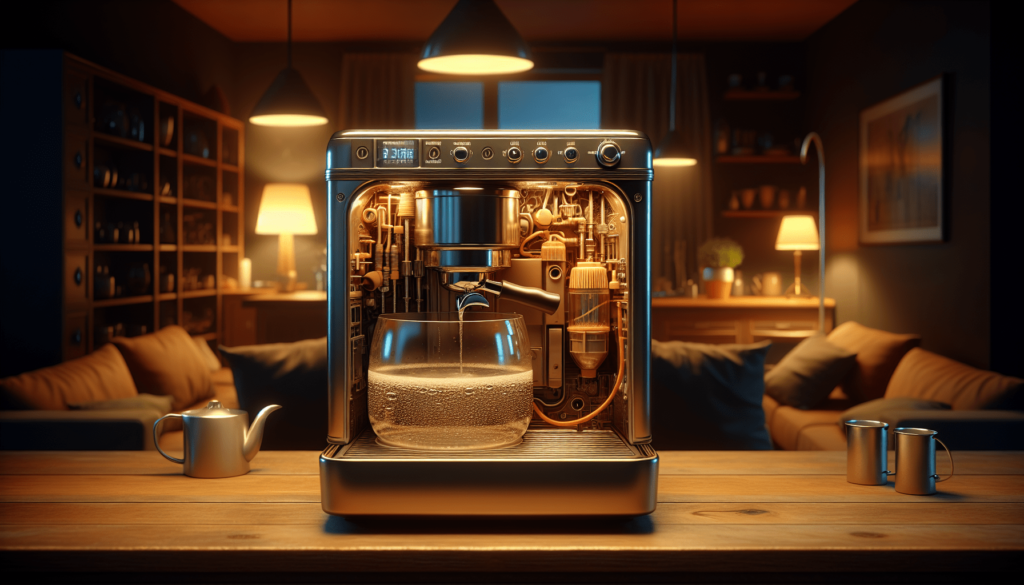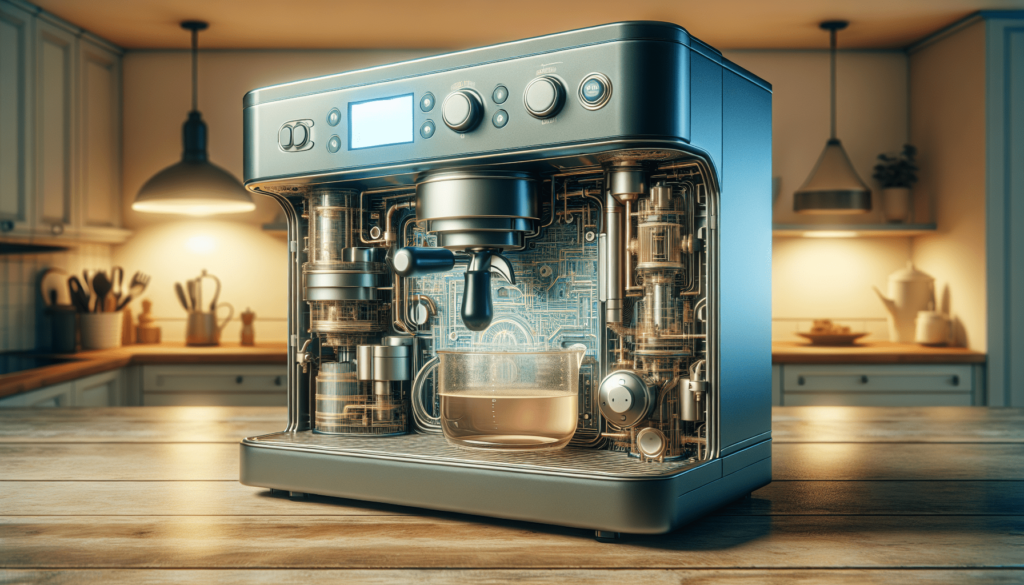Have you ever wondered how often you should descale your coffee machine? Many coffee lovers tend to overlook this crucial aspect of coffee machine maintenance, leading to poor coffee quality and potential damage to the machine itself. In this article, we will explore the significance of descaling, how often it should be done, and the best practices to keep your coffee machine in top condition.

Understanding the Importance of Descaling
Descaling is the process of removing mineral deposits, commonly known as limescale, that accumulate inside your coffee machine over time. These deposits primarily consist of calcium and magnesium, which can clog the internal parts, affect the heating efficiency, and ultimately alter the taste of your coffee. Regular descaling ensures that your machine continues to operate effectively and produces high-quality coffee.
What is Limescale?
Limescale is a hard, chalky deposit often found in appliances that heat water. It forms when the calcium and magnesium in hard water precipitate during heating. If left unattended, limescale can significantly reduce the lifespan of your coffee machine and compromise the integrity of its internal mechanisms.
Effects of Limescale on Your Coffee Machine
- Reduced Efficiency: Limescale buildup can act as an insulator, making it harder for your machine to heat water. This can lead to longer brew times and increased energy consumption.
- Altered Coffee Taste: Limescale can affect the water flow and temperature, leading to inconsistencies in brewing. This could result in coffee that tastes bitter, weak, or metallic.
- Machine Wear and Tear: Prolonged exposure to limescale can corrode and damage the internal components of your coffee machine, leading to costly repairs or replacements.
Factors Influencing Descaling Frequency
Several factors determine how often you should descale your coffee machine. Understanding these factors will help you establish a descaling routine that suits your machine and usage habits.
Water Hardness
Water hardness is a primary factor influencing limescale buildup. Hard water contains higher concentrations of calcium and magnesium ions.
| Water Hardness Level | Descaling Frequency |
|---|---|
| Soft Water | Every 4-6 months |
| Moderately Hard Water | Every 3 months |
| Very Hard Water | Every 1-2 months |
If you’re unsure about the hardness level of your water, you can use water hardness test strips or contact your local water supplier for information.
Machine Usage
The frequency at which you use your coffee machine also plays a significant role in determining descaling intervals. For instance:
- Heavy Usage: If you brew multiple cups of coffee daily, you may need to descale more frequently, as increased usage accelerates limescale accumulation.
- Moderate Usage: For those who use their coffee machine once or twice a day, a less frequent descaling schedule will suffice.
- Light Usage: If you only occasionally use your machine, limescale buildup will be slower. However, regular descaling is still necessary to maintain machine health.
Machine Type
Different types of coffee machines have varying descaling requirements. Here’s a general guideline for common machine types:
| Machine Type | Recommended Descaling Frequency |
|---|---|
| Drip Coffee Maker | Every 2-3 months |
| Espresso Machine | Every 2 months |
| Pod/Capsule Machine | Every 3-4 months |
| Bean-to-Cup Machines | Every 3 months |
Refer to your machine’s user manual for specific recommendations, as manufacturers often provide tailored maintenance schedules.
Step-by-Step Descaling Process
Descaling might seem like a daunting task, but it’s quite straightforward once you know the steps. Here’s a general guide that you can follow, regardless of the type of coffee machine you own.
Materials Needed
- Descaling solution (commercial or homemade)
- Water
- A large container or carafe
Descaling Solution Options
There are both commercial descaling solutions and homemade alternatives. Commercial solutions are specifically formulated to break down limescale and are generally considered more effective. However, if you prefer a more natural option, mixtures of vinegar and water or citric acid and water can also be used.
General Descaling Steps
- Preparation: Ensure your machine is off and unplugged. Empty any remaining water or coffee from the machine.
- Mix Solution: Prepare your descaling solution according to the manufacturer’s instructions or mix one part vinegar to one part water.
- Fill Reservoir: Pour the descaling solution into the machine’s water reservoir.
- Run Cycle: Run a full brewing cycle to allow the solution to circulate through the system. For espresso machines, run the solution through both the brew head and steam wand.
- Rinse: After the cycle completes, empty the carafe and rinse the water reservoir. Refill it with fresh water.
- Repeat Rinse Cycles: Run one to two full cycles with just water to ensure all the descaling solution is flushed out.
- Clean: Wipe down the exterior and removable parts of the machine to remove any residue.
Following these steps will help keep your coffee machine in good working order and ensure consistent coffee quality.
Best Practices for Maintenace Beyond Descaling
While descaling is crucial, it’s not the only maintenance task you should perform. Regular upkeep of your coffee machine will prolong its life and ensure that you always enjoy the best coffee possible.
Daily Maintenance Tips
- Clean the Brew Basket and Carafe: Rinse and clean the brew basket and carafe daily to remove coffee oils and grounds.
- Empty the Drip Tray: If your machine has a drip tray, empty and clean it regularly to prevent mold and bacteria growth.
- Wipe Down the Exterior: Use a damp cloth to wipe down the exterior of the machine to keep it clean and free from stains.
Weekly Maintenance Tips
- Deep Clean Removable Parts: Soak the brew basket, carafe, and any other removable parts in warm soapy water once a week.
- Check Water Filters: If your machine has a water filter, check it weekly and replace it as needed.
Monthly Maintenance Tips
- Inspect for Wear and Tear: Regularly inspect the machine for any signs of wear or damage. Addressing small issues promptly can prevent larger problems.
- Run a Cleaning Cycle: Many machines have a cleaning cycle option. Running this monthly can help maintain the internal components.

Common Descaling Mistakes to Avoid
Descaling is a relatively simple process, but there are common mistakes that can undermine its effectiveness or even damage your machine.
Using the Wrong Solution
Using the wrong descaling solution or household cleaners that are not intended for coffee machines can damage the internal components. Always use a recommended descaling solution or approved alternatives like vinegar or citric acid.
Ignoring Frequency Guidelines
Over or under descaling can be problematic. Descaling too frequently can introduce unnecessary wear, while neglecting it can lead to limescale buildup. Stick to the recommended descaling intervals for the best results.
Incomplete Rinsing
Failing to thoroughly rinse the machine after descaling can leave a residue that affects coffee taste and potentially harms the machine. Always run multiple rinse cycles with clean water after descaling.
Signs Your Coffee Machine Needs Descaling
Even with regular descaling, there may be times when your machine needs a bit of extra attention. Recognizing the signs early can help maintain your machine’s performance and prevent long-term damage.
Slower Brew Times
If your coffee machine takes noticeably longer to brew a pot of coffee or a shot of espresso, it might be due to limescale buildup obstructing the water flow.
Unpleasant Tastes
A sudden change in the taste of your coffee, such as a metallic or bitter flavor, can indicate that limescale is affecting the water quality and temperature regulation.
Visible Limescale
Sometimes, you may see white, chalky deposits around the water reservoir, coffee spout, or other parts of the machine. This is a clear indication that descaling is needed.
Increased Noise
If your coffee machine becomes noisier than usual during operation, it could be struggling to pump water through the limescale deposits.
Descaling Different Types of Coffee Machines
Each type of coffee machine has its specific needs when it comes to descaling. Here’s a closer look at descaling various types.
Drip Coffee Makers
Drip coffee makers are straightforward to descale and typically require less frequent descaling compared to other machine types. Fill the water reservoir with your descaling solution and run a brew cycle as if you were making coffee. Then, flush the system with fresh water.
Espresso Machines
Espresso machines often require more frequent descaling due to their higher brewing pressure and use of finely ground coffee beans. Run the descaling solution through both the brew head and steam wand to ensure all parts are cleaned.
Pod/Capsule Machines
These machines are convenient and compact, but they still need regular descaling. Follow the manufacturer’s instructions closely as these machines often have specific descaling programs and settings.
Bean-to-Cup Machines
Bean-to-cup machines grind coffee beans fresh and brew them in one go. Due to their complex mechanisms, it’s crucial to follow the manufacturer’s descaling instructions precisely to avoid damaging the machine.
Conclusion
Maintaining your coffee machine through regular descaling is vital for ensuring the longevity of the machine and the quality of the coffee it produces. By considering factors such as water hardness, machine usage, and machine type, you can determine the optimal descaling frequency for your specific situation. Follow the steps outlined above and adopt best maintenance practices to keep your machine running smoothly and your coffee tasting great.
By maintaining a regular descaling schedule, you not only safeguard your investment in a coffee machine but also guarantee a consistently enjoyable coffee experience. Don’t overlook this essential aspect of coffee machine care and you’ll be rewarded with delicious coffee for years to come.
